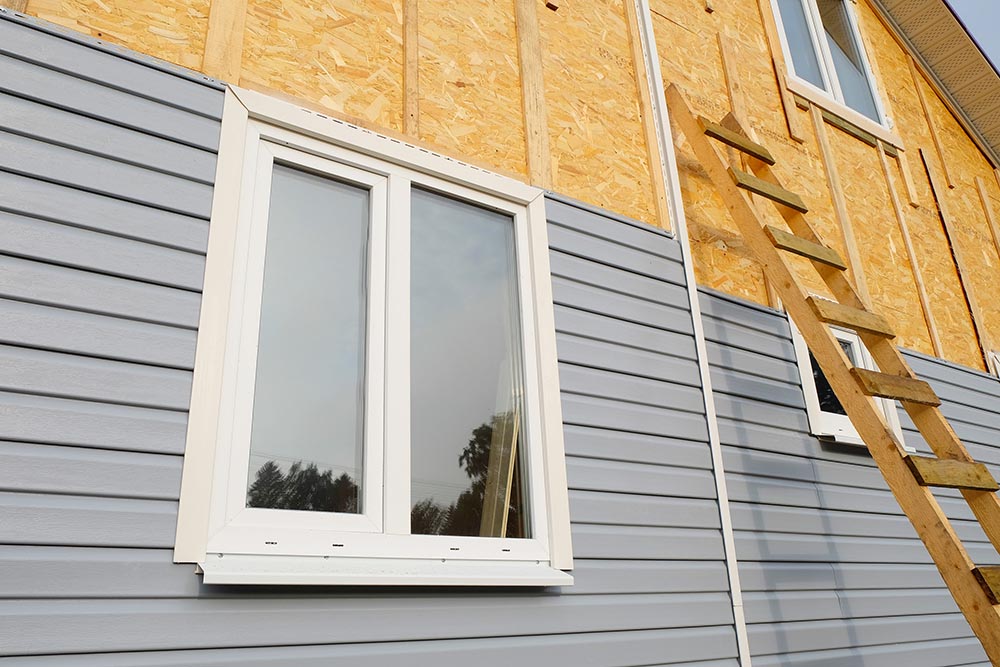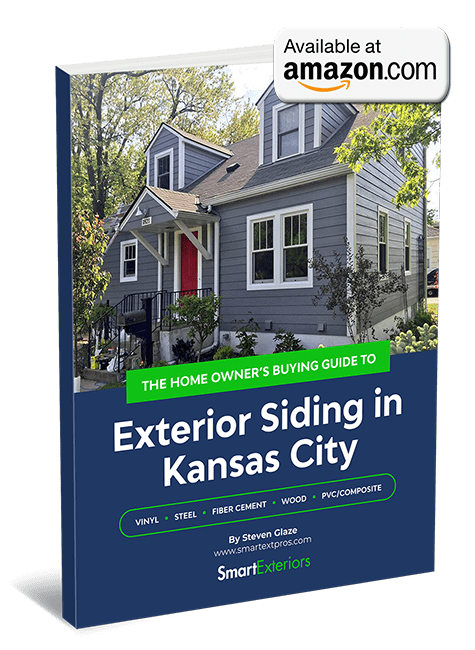When it comes to home remodeling projects, few are as impactful or as important as the ones that involve the home’s exterior. The exterior is the first thing guests notice when they pull into the driveway of your home, and it’s also the first line of defense against the elements. For these reasons, siding replacements are one of the most popular home improvement projects performed across the country.
Within the siding industry, there exists a range of materials to choose from and finish options to select—and these are not decisions that should be taken lightly. While fiber cement, wood, brick, and synthetic stone are some of the most common options, the most popular choice by far is vinyl siding.
Vinyl siding is well-loved for being versatile and affordable, but polymer siding—fairly new material on the market—is becoming wildly popular for the same reasons. In reality, vinyl and polymer materials are made of the same thing, which is plastic. While they are generally the same, there are some key differences to be aware of before making your decision between the two.
A Comparison: Vinyl Siding vs. Polymer Siding Materials
At their core, both vinyl and polymer are both plastics. However, the main difference lies in what type of plastic they are. Vinyl siding is made of polyvinyl chloride, aka PVC. Meanwhile, polymer siding is made from polypropylene resin. To the naked eye, these two differences are difficult to discern, which is why you will see both terms used interchangeably even though they’re not exactly the same thing.
Vinyl Siding
Vinyl siding is one of the most widely produced options in the world. The material is designed to be rigid while maintaining flexibility, thanks to the addition of plasticizers. This flexible nature is necessary for vinyl siding to be installed
Once vinyl siding products have been manufactured, they can be recycled many times over, reducing waste and making them incredibly eco-friendly materials. PVC never peels, rots, or flakes, and premium-quality siding products are highly energy-efficient. This means a long-lasting, low-maintenance siding option for homeowners.
Polymer Siding
Due to the different chemical makeup of polypropylene resin, this siding option is quite durable and capable of withstanding high heat. In addition, it always maintains its shape while resisting impact and other concerns such as warping. The process of making polymer siding is environmentally friendly, and the molding involved in making the siding allows for the material to easily mimic other materials such as wood.
Breaking Down Vinyl Siding
Now that you have a better understanding of the core differences between the two siding options, it’s time to look at the benefits of each one, starting with standard vinyl siding. The benefits include:
Color Fading: One of the biggest concerns with vinyl siding in the past was its tendency to fade in color after sun exposure. Thanks to improvements in its production and finish options that prevent fade, this isn’t much of a concern these days. This is due to the addition of acrylic and acrylate styrene-acrylonitrile, which are highly effective in the protection against sun damage.
Product Range: Vinyl is practically unmatched when it comes to the combinations of type, style, and color available for homeowners.
Scratch Resistance: Vinyl, unlike other materials is protected against scratches thanks to the colorants added to the PVC mixture. When a scratch occurs, the same color lies underneath making the scratch practically invisible.
Minimal Maintenance: This siding option has long been sought for its minimal required maintenance alone. A soft brush and a hose once or twice a year with a mild detergent is all you’ll ever need with this choice.
Wind Resistance: Most vinyl siding products have demonstrated the ability to withstand wind speeds up to 110-mph. Improper installation or vinyl siding that’s considered low-quality will negatively affect this benefit.
Decay Proof: As a plastic, this material won’t decay or rot. Compared to natural options such as wood, this results in a longer lifespan.
Affordability: Hands down, this is one of the deciding factors when it comes to vinyl siding. This option not only is affordable upfront, but also maintains its value up to the first 25 years of its life. Other materials start to equal vinyl in value between 35-50 years.
Breaking Down Polymer Siding
Polymer siding offers most of the same benefits as vinyl siding. However, there are a few differences that homeowners can benefit from when choosing polymer siding.
Stronger: Because of chemical makeup of polymer siding, it can be stronger than standard vinyl siding of the same thickness.
Cost: Polymer siding typically costs 50%-75% more than vinyl, and with minimal additional benefits it just doesn’t make sense for most homeowners.
Environmentally Friendly: While both vinyl and polymer siding products are recyclable after they’ve been produced and used as siding materials, polymer siding is more eco-friendly during the production process.
Deciding Between Polymer and Vinyl Siding Materials
Making a decision between these two products can be difficult—despite the two products being close to the same thing. Often, the final decision comes down to price and durability, where the more affordable and durable product is chosen. Here are some things to consider that might affect your decision:
Consider Premium Vinyl: Premium vinyl products, like Alside’s Charter Oaks line and others, represent the strongest and most durable vinyl siding products on the market. These products are manufactured to be much thicker than standard vinyl, and are just as strong if not stronger than polymer selections. Plus, premium vinyl offers improved aesthetic appeal due to its deeper wood graining patterns and style options.
Polymer Costs More: Polymer siding is naturally much more expensive than vinyl, making it a more substantial upfront investment. When it comes to durability, premium vinyl products can be less expensive and even more durable than polymer products.
Insulation: Insulated siding makes the entire home stronger and more energy-efficient. There are more options available with insulated vinyl siding than insulated polymer siding. If managing the flow of heat and making your home more eco-friendly is a concern for you, then you’ll want to consider insulated vinyl siding going forward.
Availability: The less available the siding material, the more the cost goes up. Polymer siding options can be harder to find than premium vinyl products—which can make the choice even easier on you and your wallet.
Explore Innovative Siding Solutions from Smart Exteriors
Making the right choice for your investment into your home can be intimidating. If you’re planning a home improvement project and trying to decide how to spend your money on siding products that are durable, beautiful, and affordable, Smart Exteriors is here to help.
Our premium quality siding products are chosen for their strength, eco-friendliness, beauty, and cost-effectiveness. Give our team of expert installers a call to discuss your plans for your Kansas City home or fill out our online form to get started with a free, no-obligation pricing estimate.

